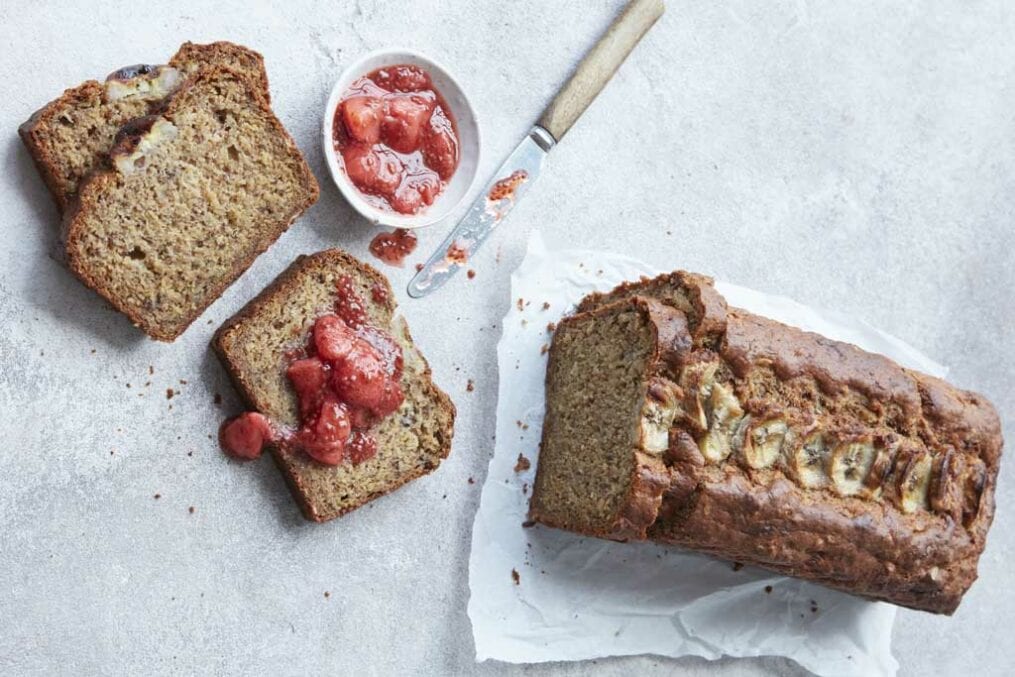Is social media damaging your mental health?
By Somali Magazine Staff
We investigate the relationship between your social feeds and mental wellbeing
The headlines usually paint a pretty bleak picture. Facebook itself has admitted it can have a negative impact on mental health, while many studies have shown that ‘aspirational’ Instagram content can make young users feel inadequate. Even some governments are recommending new laws around social media sites in the belief that they ‘expose children to harm’. Numerous studies link social media use with mental health issues like depression and anxiety, sleep problems, and increased suicide risk.
But are we oversimplifying a complex picture? For a start, most of the research can’t determine whether spending more time on social media leads to depression or anxiety, or if inversely people who struggle with their mental health simply spend more time on social media. Similarly, just as watching a horror film or hearing about a terrible news story can affect people differently, social media use doesn’t affect everybody’s mental health equally.

Feeling isolated

There is, though, a torrent of negative research; US researchers found that for women using Twitter, the stream of stress on their newsfeed is contagious.
Austrian research revealed that the longer people are active on Facebook, the more negative their mood is, and a US survey of 7000 19- to 32-year-olds found that people who spend the most time on social media were twice as likely to feel isolated.
This research, though, is almost exclusively conducted among people aged 32 and under, and most of whom are students. It’s important to consider why social media may impact the mental health of young people more. Children and teenagers are more sensitive, more vulnerable. They are exploring their identity, so when they post pictures of themselves, people’s reactions can have a profound impact. There’s also bullying; in previous generations children were safe at home. Today, they effectively feel bullied when they are on their phones in their own bedrooms.
Among older users of social media, it’s a mixed picture. One study found that it made people aged 30-plus more likely to dwell negatively on whether they had met their goals by comparing their lives to others. In contrast, a US survey of more than 3000 adults aged 35-plus concluded that social media use was not associated with increased depression.
Its power to make us question our own value is a major problem, and that’s again heightened in young people. ‘Children post a picture, then have their entire day ruined by obsessively checking to see if anybody liked it,’ says Theodosiou. We have a generation of teens basing their self-worth on other people’s opinions.
However, as clinical psychologist Maxine Campion says, ‘Complete denial of social media’s existence is not the answer. We need to educate and protect our youth from the possibly negative effects, while maximizing the positives.’ That’s challenging in itself because we as adults are trying to help navigate a world we don’t fully understand.
So what can be done? A 2017 study of people aged 11-25 found that Instagram made users feel worse about their body and Facebook worsened cyber-bullying. In response, the authors recommended pop-up notifications when a young person has spent a certain amount of time online, a watermark on photos that have been digitally manipulated and school lessons to teach youngsters to use social media in a healthy way.
Improve connections
But experts agree, the positives mustn’t be ignored. The Mental Health Foundation has stated that online technology can reach the most vulnerable, as well as reducing stigma of mental health. ‘Used in an “active” way, social media can improve connectedness and self-esteem,’ says Natasha Devon, young people’s mental health campaigner and author of A Beginner’s Guide To Being Mental. ‘This is particularly important for young people who feel excluded, for example, those with mental health issues or learning difficulties.’
UK research found that 68% of young people find chatting to their friends online cheers them up, with 88% saying they had sent friends ‘kind messages’ when they were upset. ‘Teens can be incredibly supportive of other teens,’ notes Theodosiou.

The Royal Society For Public Health found that those aged 14-24 believe Facebook, Instagram, Snapchat and Twitter give them extra scope for self-expression and emotional support. And research has shown that social networking can help older adults feel less isolated.
Managing a healthy relationship with social media seems to be about your approach. ‘The key is to limit use within healthy boundaries,’ says Devon. ‘Having a fixed “cut off” time and always remembering that social media gives one the luxury to design one’s own social silo. Follow people who inspire you and ditch anyone who makes you feel worse.’
All generations need to use social media mindfully, regularly flexing our willpower muscle and resisting the urge to scroll. We should avoid use at night, switch off notifications to escape the stress-inducing pings, flashes and vibrations, and make sure we stay in the moment, not behind a screen capturing it ‘for the ’gram’. It’s better to be an active, rather than passive user less browsing, more chatting. Recognising how much is too much is a powerful tool, too. Moment, a social media tracking app, found that in general people were happiest who spent around half an hour a day on social media.
Far over and above social media, the causes of mental health problems remain childhood experiences, life events, physical health problems, genetics and the impact of drugs and alcohol. Social media is an easy target but, when used healthily, it can create a sense of belonging and provide a powerful outlet to people at risk. Not so toxic after all.
Women Health
Why now is The Perfect Time to Try Skin Fasting?

Any skincare or beauty junkie knows only too well that skincare trends tend to come and go. Just take a quick look in your bathroom cabinet and you’re likely to see the result of these trends in the form of a cabinet full of half used products. It seems like every week we are being introduced to a new fad or hope in a jar that’s set to reveal our best skin yet, but unfortunately, most of these fads fail to hold up – until now. Enter skin fasting.
Skin Fasting is a trend that is fast gaining momentum around the world thanks to its no fuss approach to skincare (aka it’s easy to facilitate) and offers a whole range of benefits for the skin. So just what is Skin Fasting and why is now the perfect time to give it a try? Biologi Dermal Specialist Lucy Macdougald details all.
What is skin fasting?
Skin fasting is a skincare trend that focusses on stripping back your entire skincare routine and mostly relying on your skin’s natural processes to do the job. It’s basically Marie Kondo-ing your bathroom cabinet and getting rid of all the unnecessary products in your routine. It minimises the amount of products that you’ll use, relying on the theory that less really is more.
What are the skincare benefits?
Skin fasting allows your skin some time to work on regenerating itself, rebuilding its natural acid mantle and getting back to its regular pH levels – which should always be the ultimate goals in skincare.
Many of the skincare benefits actually link back to how using too many products could be causing more harm than good. Many people don’t realise that layering skincare ingredients can be detrimental, often causing harsh reactions or at the very least, rendering products useless. Over complicating skincare routines essentially confuses the skin, often causing excessive oil production or making it used to working hard to removing toxins, rather than rejuvenating itself. The important thing to realise is that the skin is actually quite powerful and can rejuvenate itself on its own, however we often interfere with this process with excessive cleansing or applying too many products.
Skin Fasting also minimises the risk of people committing the ultimate skincare sin – layering different active products on top of each other without really knowing what you’re doing. Best case scenario in doing this is you’re actually cancelling out the active ingredients (the part of your skincare product that gives your skin the benefits) and worst-case scenario is that some of these ingredients can react with each other and cause a reaction.
For example, if you apply a Glycolic Acid to remove dead skin cells, then apply a product with Salicylic Acid, you can cause major reaction to the skin by stripping it which can be too harsh for your skin to handle. Or another great example is applying Vitamin C in conjunction with AHAs or BHAs – Vitamin C is really unstable, so any acids you layer it with will destabilise the pH balance and render it completely useless (or aka a total waste of time and money)!
How can we try skin fasting?
Thankfully, skin fasting is really easy to implement! You don’t necessarily need to buy a whole heap of new products because it’s basically the opposite of trends like K-Beauty or 10-step routines.
The easiest way to approach skin fasting is by keeping the mantra “less is more” in the back of your mind. You want to try to strip back your entire skincare routine back until you’re left with only a couple, or for those trying to do it hardcore, no products at all.
This might sound scary to people who are used to more complicated routines, but the benefits really are endless. The best way to approach skin fasting is by doing it in stages (don’t go cold turkey)! You might start off by having a couple of makeup-free days a week, then slowly you stop using all the unnecessary products in your routine. What’s unnecessary you ask? Well, toners, sheet masks, mud masks, day creams, night creams and the list goes on. While all these products do have a place every now and then, applying them religiously every night is likely doing more damage than good.
Introducing the skin fasting trend gradually will work best on most skin types, especially if your skin is used to a lot of products or excessive cleansing.
A great routine to get you started is by removing all your make up thoroughly with a hard-working (but not stripping) cleanser like Biologi’s Bc Refresh Cleanser and once your skin is clean only apply minimal must-have products (like a multi-purpose serum such as Biologi’s Bf Restore Face and Body Serum), followed by sunscreen (and make up if you must).
Then in the evenings try a two-step cleanse using a micro fibre cloth and gentle cleanser. When you wake up the next day it should be ok for you to simply clean your face using just hot water (and a micro fibre cloth if needed), then applying a serum followed by sunscreen. Ideally you will only use one or two non-negotiable skin products that you need to get you through. For some this might be just a cleanser and a serum but please don’t forget about sunscreen if you’re heading outdoors (or sitting inside exposed to sunlight). Then just repeat your new routine each day for a few days, but ideally for a couple of weeks to really see the benefits.
When considering Skin Fasting, only introduce products that contain a high percentage of active ingredients and try to avoid products laden with ingredients like silicones and sulphites. Ultimately you want products that will do a few things at once – hydrate, radiate, reduce blemishes, target fine lines and protect the skin.
Why is now a good time to try?
Now is a good time to try it as we’re coming into the cooler months which can mean we’re not going out as often. That means you can deal with skipping make up every now and then and adjusting to the new routine. With skin fasting, there will be an adjustment phase where your skin might seem either too dry or too oily, which is just your skin reacting to getting used to the new routine. Once you push through this phase, you’ll be left with skin that feels revived and rejuvenated. Stripping back an overly complicated skincare routine can not only be liberating, but it is incredibly healthy for the skin.
Men Health
What Do You Want to Know about Men’s Health?

Doctor, Diet, Exercise, Weight, Vitamins, Habits, Protection, Prostate, Get Checked
Visit your doctor
Men are notorious for avoiding the doctor and ignoring unusual symptoms. This may help explain why women tend to live longer. Don’t let complacency take a toll on your health.
Schedule yearly checkups with your doctor and keep these appointments. Your doctor can help monitor your weight, blood pressure, and the level of cholesterol in your blood. Excess weight, high blood pressure, and high blood cholesterol are risk factors for cardiovascular disease. Your doctor can recommend lifestyle changes, medications, or other treatments to help get your weight, blood pressure, and blood cholesterol under control.
Eat natural foods
Packaged and processed foods are often full of sugar, salt, unhealthy fats, artificial additives, and calories. Limit the fake stuff and eat a wide variety of:
- fresh fruits and vegetables
- whole-grain products, such as brown rice and whole-grain breads
- fiber-rich foods, such as beans and leafy greens
- lean cuts of meat and poultry, such as skinless chicken breast and lean ground beef
- fish, such as salmon
When buying groceries, shop the perimeter of the store. This is where you’ll typically find the freshest foods. Spend less time inside the aisles, where processed foods tend to be located.
Get moving
Heart disease is the leading cause of death among American men. Regular exercise is one of the best ways to prevent heart disease and keep your ticker strong. It can also help you improve and maintain your overall physical and mental well health.
Try to get at least 150 minutes of moderate-intensity aerobic exercise, or 75 minutes of vigorous aerobic exercise, every week. For example, schedule five 30-minute long sessions of aerobic exercise in your weekly calendar. Aerobic exercise includes activities such as walking, jogging, swimming, basketball, tennis, and other sports.
It’s also important to make time for at least two sessions of muscle-strengthening activities per week. For example, weight lifting, rock climbing, and yoga can help you develop stronger muscles.
Maintain a healthy waist
If your waist measures more than 40 inches around, it could be cause for concern. According to the National Heart, Lung, and Blood InstituteTrusted Source, it raises your risk of obesity-related diseases. For example, men with large waists are at higher risk of type 2 diabetes, heart disease, and stroke.
For most men, the best way to shed excess belly fat is to cut calories from your diet and exercise more. Ask your doctor to help you develop a weight-loss plan that’s safe and effective for you.
Get your vitamins
Most people can get the vitamins and minerals needed for optimum health by eating a well-balanced diet. It’s important to eat wide variety of vitamin- and mineral-rich foods, such as fresh fruits, veggies, and whole grains. Many of those foods also provide heart-healthy fiber and natural antioxidant compounds that can help lower your risk of certain diseases.
Some people may also benefit from taking a daily multivitamin or other supplements. For example, your doctor may encourage you to supplement your diet with fish oil capsules containing omega-3 fatty acids and vitamin D3. Ask your doctor about the potential benefits and risks of adding a multivitamin or other supplements to your daily routine.
Break unhealthy habits
Smoking is one of the worst things you can do for your health. Secondhand smoke is also very dangerous. A good number of people around the world die from lung cancer caused by secondhand smoke every year, reports the Centers for Disease Control and PreventionTrusted Source (CDC). Smoking and secondhand smoke exposure can also cause other health conditions, such as chronic obstructive pulmonary disease (COPD), emphysema, and heart disease. They also raise your risk of developing many types of cancer.
Other health-damaging behaviors include excessive alcohol consumption and recreational or habitual drug use. If you consume alcohol, do so in moderation.
If you use recreational drugs, it’s important to stop. They’re linked to many health conditions. For example, cocaine use can cause heart attacks and strokes. Injected drugs of all sorts can lead to serious infections and skin breakdown at the injection sites.
Some men also use anabolic steroids to increase muscle mass. This can lead to serious health consequences. Possible outcomes include sterility, heart disease, skin disease, and behavioral problems.
If you smoke, drink too much, or use illicit drugs, your doctor can help you develop a plan to quit. They may recommend medication, therapy, or other treatments or strategies.
Protect your skin
Melanoma is a type of skin cancer. It’s one of the deadliest cancers. According to the Academy of Dermatology (AD), men over the age of 50 are at a heightened risk of developing it. Your risk is also higher if you’re Caucasian.
To lower your risk of developing melanoma, take steps to protect yourself from harmful ultraviolet (UV) radiation from the sun. When you’re outside:
- spend time in the shade
- cover your body with protective clothing
- cover exposed skin in sunscreen with a sun protection factor (SPF) of 30 or higher
- reapply sunscreen every two hours or more frequently if you’re sweating or swimming
It’s also important to avoid tanning beds, which are harmful sources of UV radiation.
Conduct a monthly skin check to look for new or unusual moles, changes to existing moles, or other changes to the color or texture of your skin. Use a mirror to help check places you can’t usually see. Visit a dermatologist about once a year for a full-body skin check.
Get your prostate checked
After skin cancer, prostate cancer is the most common cancer diagnosis among men, reports the World Cancer Society. If you have trouble urinating, develop pain when you urinate, or notice blood in your urine, it may be a sign of prostate problems. Make an appointment with your doctor. They may encourage you to get blood tests or undergo a prostate exam to check for prostate cancer or other conditions.
Meet MOFIT

Mohamed Abdi is the founder of an international Health lifestyle company “MOFIT”. Mohamed is a Somali-born who grew up and studied in Europe. In his early 20s, Mohamed is a well-established entrepreneur with his Business Brand gaining a recognizable footing across Europe, North America, and Somalia. In 2016, Mohamed started an online fitness program that was more of a consultancy on maintaining a healthy lifestyle and nutrition. This like most start-ups has been not all smooth but a journey on a bumpy road. He says, “ when my father learned about what I was embarking on him, without a second thought negated it, not only having a negative perspective about it, but he also denied me any financial support because he preferred other professional careers, such as; engineering, lawyer or even a doctor. However I insisted, and chose to go into a healthier lifestyle which I integrated with nutrition and later realized my dream.” Mohamed says, “They are always many obstacles in every career, but what determines success is being happy and comfortable with what you do. Believing in yourself and what you are doing; if you do not believe in yourself no one will believe in you. You do not have to do something because someone is doing it or someone wants you to do it. Success is doing what you love.”
Mohamed first returned to Somalia in 2014 for a feasibility study about his newfound passion for fitness, health, and well-being. After two months he moved back to Europe for his studies. He then went to the USA where he developed more passion for bodybuilding. Later alone he moved back to his family in Poland. In 2016, he founded MOFIT a fitness and healthy lifestyle company. He then developed a nutritious product with different nutritious elements for bodybuilding and weight loss, which has positive feedback. MOFIT products are now sold globally in Europe, the USA, and gaining a foothold in some African Countries. His product has had a turnover of over USD 400,000 since it went on the market in 2018. However, this still was not an easy mark to reach. According to Mohamed, “it took me 2 years to earn my first 50 USD. He says, “there are still several challenges, lack of awareness; here in Somalia and all over Africa, people are still living unexamined lifestyle: eat and sleep. There is a need for people to learn and understand that a healthy lifestyle needs not only “eat and sleep”, but also some knowledge, workout plans, and a healthy nutrition plan.”
Mohamed understands that it takes not only effort but also a well-streamed-lined vision “to change people’s life towards a better healthy lifestyle.”
Family Health
Family first aid: could you save your child’s life?
Most parents wouldn’t know what to do in an emergency. Make sure you’re not one of them.

Nearly 90 percent of parents admit that they wouldn’t know what to do if their child was unconscious, and choking is Somalia’s third most common cause of death in children under five. Scary right?
However, learn the basics of family first aid and you could save lives, says ___________, training development manager for __________________, the Somalia’s leading Pediatric Hospital.
What to do… if your child stops breathing
‘If you’re confident giving CPR, start immediately. Send someone to get help as you need to get oxygen into a child’s body straightaway. Start with five rescue breaths (it’s the same technique for children as it is for adults). With babies under one, don’t overextend their chin and place your mouth around their mouth and nose, blowing gently.
Give 30 chest compressions – two fingers for a baby, the heel of one hand for a child – pushing down one-third of the depth of the chest. Alternate between two rescue breaths and 30 chest compressions. If you have to leave the child, do a minute of CPR on them and then go for help. If you don’t feel confident doing rescue breaths, the current advice is to do chest compressions only as detailed above.
What to do… if your child gets something stuck in their nose or ear
If nose-blowing or a little water poured into the ear doesn’t dislodge it, take them to a hospital. Don’t try to remove it yourself, as you may push it in further.
What to do… if your child starts choking
For children over a year, CPR advice is the same as for adults. But we don’t do abdominal thrusts with babies, in case of damage to internal organs. Instead, alternate between back blows and chest thrusts.
Turn the infant on your forearm, face down, supporting the head and neck, and apply up to five back blows. If they’re still not breathing, lay them facing up on a flat surface, and place two fingers on the centre of their chest. Push in and up to a third of the depth of their chest, up to five times. If they’re still not breathing, alternate between blows and chest thrusts. If the object’s not removed after three cycles of each, check help is coming and go on. If they become unconscious, start CPR.
What to do… if your child swallows something toxic
Ask what they’ve taken and call for emergency. Don’t induce vomiting, as further damage may occur. Unless they’ve swallowed tablets, get them to sip cold water or milk.
Get the basics right and you could avoid disaster. Knowledge saves lives!
Food
By Niamh Leonard-Bedwell
When it comes to appetising smells, freshly baked banana bread is pretty hard to beat. This recipe for banana bread swaps egg for omega-3-rich flaxseed mixed with warm water. It also uses oats, which are a great source of slow-release energy, as well as heart-healthy beta glucan. Plus, it uses five whole bananas, which provide fibre and potassium, needed to regulate fluids, nerve signals and muscle contractions in the body. Slice up your loaf and enjoy on its own, or slathered in peanut butter or strawberry jam for a tasty teatime treat.

Serves 8
For the flax egg:
1 tbsp ground flaxseed
3 tbsp warm water
Wet ingredients:
55ml coconut oil, plus extra for greasing
400g ripe bananas (approximately 4 medium ones)
80ml almond milk
2 tbsp maple syrup
1 tsp vanilla extract or paste
Dry ingredients:
65g coconut sugar
60g jumbo rolled oats
1 tsp bicarbonate of soda
½ tsp baking powder
½ tsp Himalayan salt
280g self-raising flour
1 whole banana, sliced (no end bits)
- Preheat the oven to 180°C and grease a 2lb/1kg loaf tin lightly with coconut oil using a silicone brush.
- Make your ‘flax egg’: mix the flaxseed with the warm water and leave for 10 minutes to thicken.
- Meanwhile, melt your coconut oil in a saucepan. In a large bowl, mash the banana until almost smooth, then stir the flax egg, milk, melted coconut oil, maple syrup and vanilla into the mashed banana until well combined.
- Stir the dry ingredients into the batter one at a time, mixing well to incorporate each before adding the next. Add the coconut sugar first to ensure it melts, then the oats, bicarbonate of soda, baking powder, salt and lastly the flour.
- Make sure everything is mixed well and there are no patches of flour. This is very important, as otherwise you will get white splodges in the bread and they do not taste good.
- Pour the batter into the prepared loaf tin and spread out evenly. Place the sliced banana across the top in the row along the centre and gently push down.
- Bake the loaf, uncovered, for 45 minutes, until lightly golden and firm on top. If it starts to caramelise and darken the bananas on top too much (if your bananas were really ripe and therefore had more sugar content, this will happen) simply cover with a sheet of dampened scrunched up parchment paper to protect the top from burning.
- After 45 minutes, check that the loaf is cooked through using a skewer. If it is ready, this should come out clean, and the top of the loaf should slowly spring back when touched.
- Leave the loaf in the tin for 10 minutes to cool. Do not leave it any longer as it will sweat and make your loaf damp and prone to breakage. Slide a palette knife around the edges to loosen them, and gently remove it from the tin. Place your banana bread onto a wire rack and leave until completely cooled.
